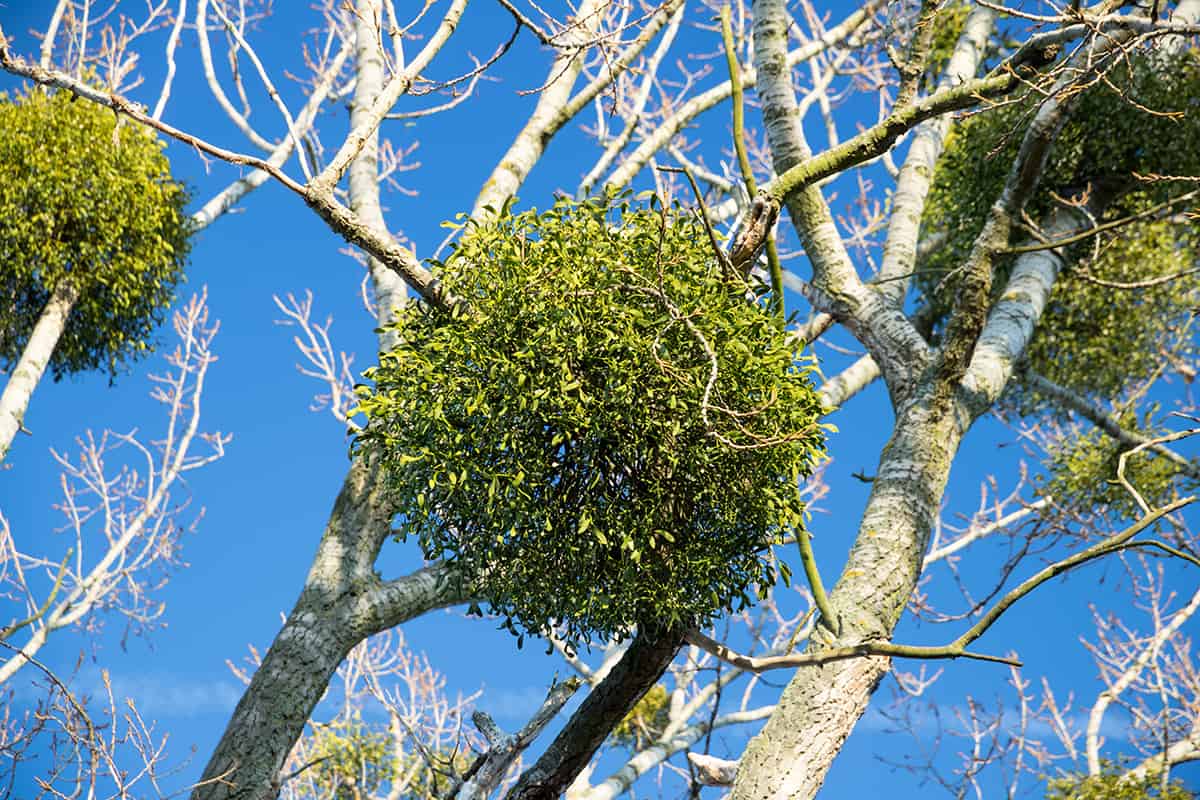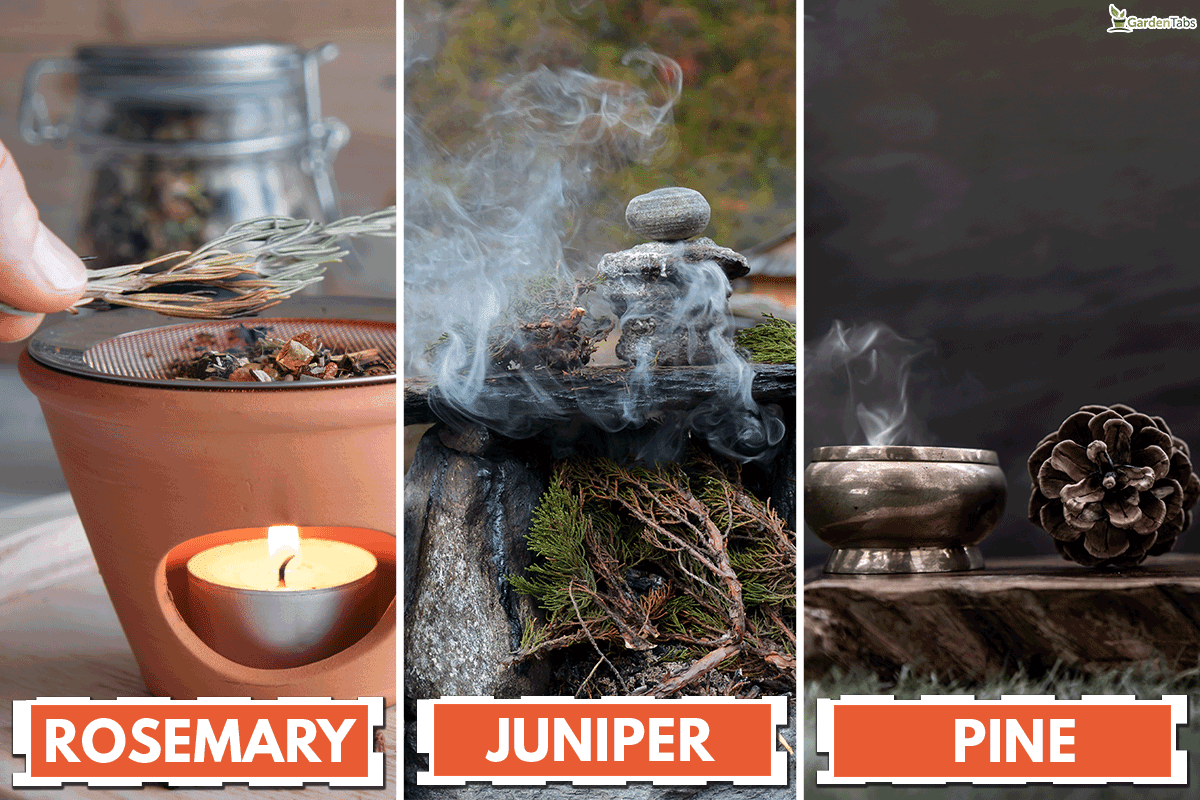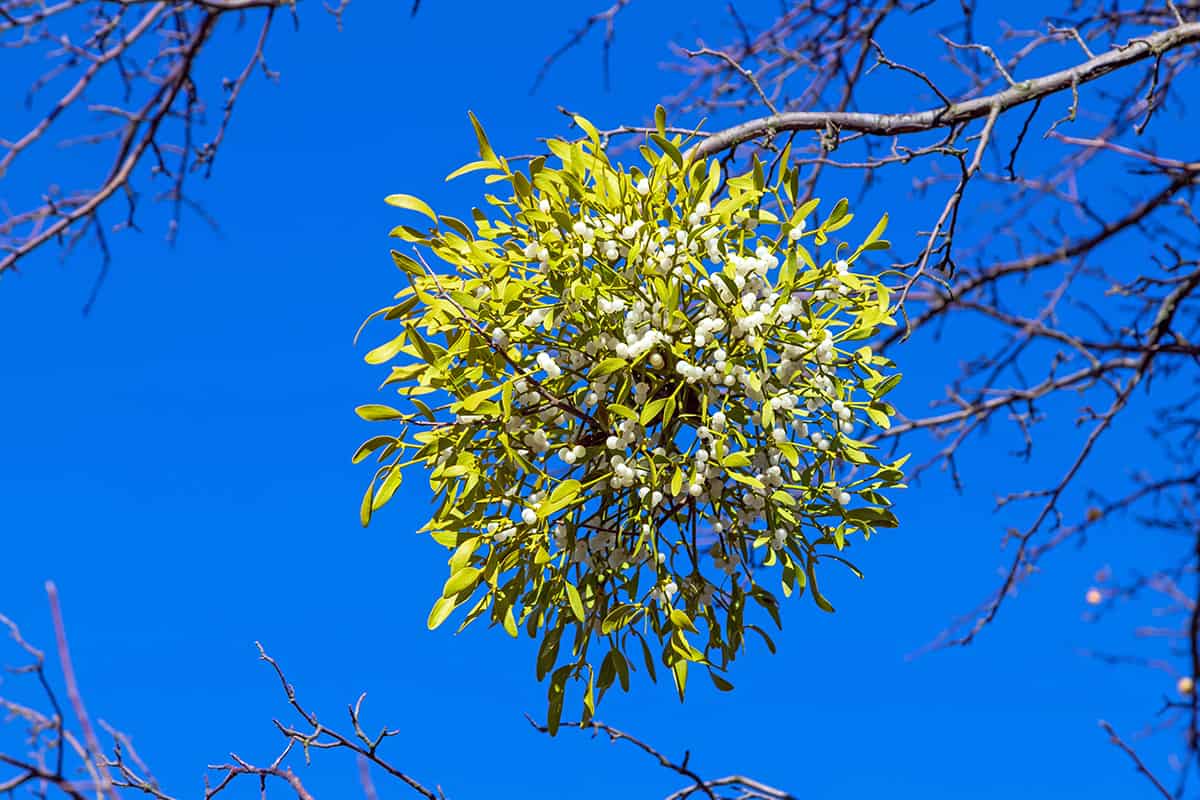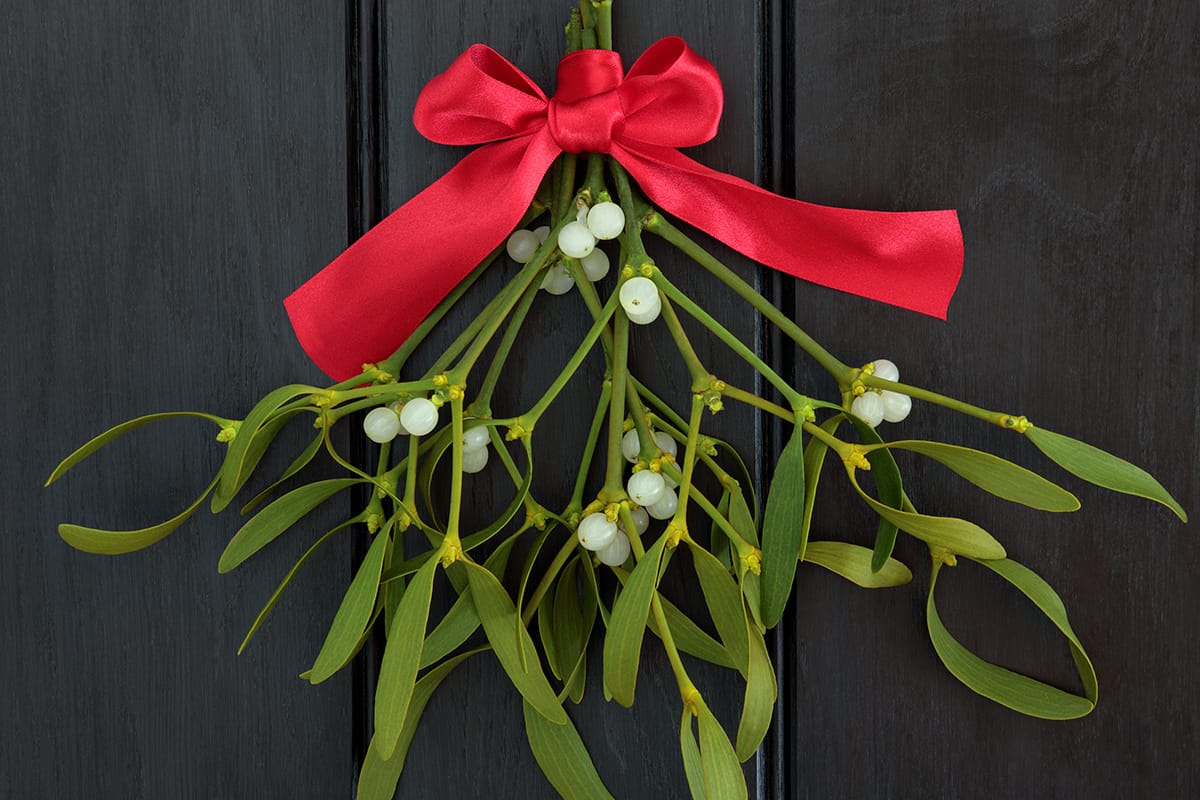This article was reviewed by Steve Snedeker, professional landscaper.
Most people know that mistletoe is poisonous when ingested, but the American plant (Phoradendron serotinum) is actually much less toxic than its European counterpart (Viscum album). Unfortunately, that does not mean it is entirely safe to burn. There is little research currently published on the fumes produced by the plant, however, findings suggest it can be harmful.
No, you should not burn mistletoe. Burning poisonous plants can release toxins in gaseous form. If inhaled, your lungs will experience mild discomfort.
This post will explore the toxicity of burning mistletoe, along with the plant's history and burning alternatives. Just keep reading!
Burning Mistletoe - The Parasite Attacking Your Tree
Let us first try to understand the process of burning plant matter. What happens when you burn biomass? Plants have carbon stored inside of them. When burned, the carbon is released and mixed with the oxygen that is in the atmosphere. This increases the amount of carbon dioxide in the air, thus worsening air pollution.
There are exceptions in which biomass is burned in favor of the ecosystem. Controlled fires in the right environment can be prescribed by experts in order to stunt the growth of an invasive species. If the controlled fire is repeated each season, it might kill the invading plant.
Can You Burn Mistletoe To Get Rid Of It?
So it would seem that if parasitic mistletoe leeched onto your tree, you would safely burn the parasite off. Unfortunately, there is one key distinction here. Mistletoe is a parasitic plant, not an invasive one. Opt for other methods of removing mistletoe. The easiest and most effective way is to prune the infested branches.
According to the Invasive Species Council, an invasive species is a non-native plant that causes harm to the environment. This includes putting humans, wild animals, and native plants in potential danger.
For examples of plants with non-invasive roots, check out another one of our posts here: 11 Evergreen Shrubs With Non Invasive Roots
Alternatively, the word parasitic relates to its symbiotic relationship with other organisms. Parasitism is when one plant steals nutrition from another plant (the host).
Mistletoe takes water and nutrients from the host tree for themselves. Although, mistletoe also provides shelter for various other organisms. It can have mutualistic relationships with the other wildlife that occupy the tree.

Burning mistletoe would destroy the resource that is used by many other species. Although it might cost your oak tree a bit of energy here and there, it is not the worst thing that could happen to your beloved tree. If the plant is not actively killing the tree, it is safe to let it remain as it was naturally grown.
Smoking Mistletoe
There is little written record of people burning mistletoe, nevertheless, it is a plant people have inevitably tried to smoke.
Smoking mistletoe probably would not kill you (just as consuming it likely won't) although it is not recommended. The idea that smoking toxic plants can get you high is entirely false. Rather, it can damage your respiratory system and leave you feeling uneasy.
Using Mistletoe Spiritually And Medicinally
Historically, mistletoe has been both spiritually and medicinally significant. Ainu people of the northern Japanese island Hokkaido have been using mistletoe to increase their crop yields for centuries.
Farmers would place small pieces of mistletoe in the soil with their crops to increase fertility. Welsh people were said to have done the same, and Druids often used mistletoe in fertility elixirs.
Clearly, the belief that mistletoe can increase fertility is not unique to the Ainu people. The idea that the plant can benefit one's fecundity is because mistletoe still fruits in the winter.
This trait has led to people using mistletoe in all sorts of ways—commonly as teas or injections—to gain the same properties as the plant.
In Rome, women would carry pieces of mistletoe with them. In England, infertile women would eat mistletoe in small amounts, believing it may help them conceive. Again, however, there is no mention of burning the plant to take on its properties.

Find mistletoe essential oil on Amazon here.
Burning Plant Matter - Smudging
Burning plants can also be an aspect of a religious or spiritual ceremony. Smudging is the most common example of this. The herbs used for smudging are usually sage, cedar, Seneca grass, or lavender.
For more information on utilizing homegrown herbs, check out this post: 18 Herbs That Like Full Sun For Your Kitchen Windowsill
There are many types of sage, but white sage is the most sacred variety to dozens of native American tribes. The Chumash, Dakota, Cheyenne, Navajo, Comanche, and Lakota, among many other indigenous peoples, have used white sage in their practices for centuries. Over time, white sage populations became endangered.

White sage was used in numerous ways, including the burning of biomass to purify a space. The Cheyenne tribe uses white sage in their Sun Dance, and the Dakota used the herb for its healing properties.
While nothing can quite replicate the exact attributes white sage can, there are plenty of alternatives. Non-native people should try using a different plant.
For these reasons, it is better to use other herbs besides white sage in smudging. A few other options are rosemary, juniper, and pine.



You can find seeds to start your own herb garden on Amazon.
Can You Smudge With Mistletoe?
While there are a handful of spiritual blogs that suggest smudging with mistletoe, there is not too much information about it.
It should be kept in mind that burning toxic plants is a health concern. Nonetheless, mistletoe has been used for protection and manifesting romance. Several sites suggest pairing mistletoe with blue sage to cleanse a house.
Is It Safe To Touch Mistletoe Without Gloves?

Yes, you can touch mistletoe. Touching the plant is not harmful, except on rare occasions if you are allergic to it. The dangers of mistletoe lay in consuming it.
Although this post covered medicinally using mistletoe, it is advised not to do so without consulting a doctor. The population with the largest posed risk of mistletoe poisoning is young children! Be sure to keep the plant out of reach of children and pets.
Where Does The Name "Mistletoe" Come From?
The etymology of the word is actually quite interesting! Mistletoe comes from the old English word "misteltan" meaning mistel (dung) and tan (stick). The reason dung is in the original word is because mistletoe actually spreads through bird poop.
When animals eat the berries produced by a mistletoe plant, they digest the seeds. The seed coat is then broken up enough to germinate once it is outside of the bird. The bird poop acts as a natural fertilizer and creates a healthy environment for new mistletoe to sprout.
Why Do People Kiss Underneath Mistletoe?

This post has previously explored the symbolism behind mistletoe; fertility, vivacity, romance, and protection. The Druids and Celtics were among the first people known to begin decorating with mistletoe. A kiss underneath mistletoe was supposed to restore a person or animal's fertility.
In Norse mythology, however, there is a folktale that discusses the origins of the mistletoe kiss. There is a god named Badur, whose mother is named Frigg. Loki instructed another god named Höðr to use mistletoe to kill Badur. Höðr was blind and manipulated into killing his brother, Badur.
Later on in the tale, Frigg was able to convince other gods to help bring Badur back to life by making a promise. As goddess of love and beauty, she swore that mistletoe would bring kisses to anyone near it.
In some versions of this story, the gods personify mistletoe and convince it to change its ways. The plant must permanently bring about happiness, often found in the form of kisses.
In Closing
Unfortunately, burning mistletoe is not in your best interest. There are alternative ways to dispose of mistletoe, and there are better herbs to burn for cleansing rituals. While it is a parasitic plant, it isn't as dangerous as pop culture has depicted it to be. Just make sure to keep it out of reach of children, and you should be fine!
If you found this article helpful, read some of our other works down below:
How Big Do Mistletoe Trees Grow?
How To Start A Raised Bed Vegetable Garden For Beginners [Step By Step Guide]
Will Hostas Grow Under Trees? [Inc. Pine, Walnut, Maple, Cedar & More]

